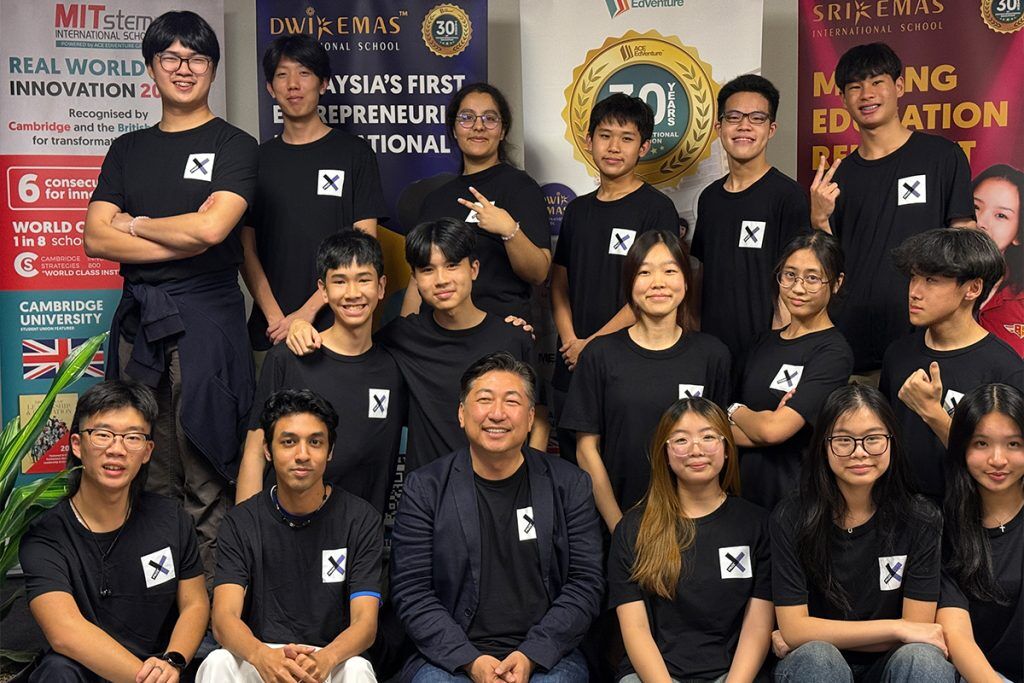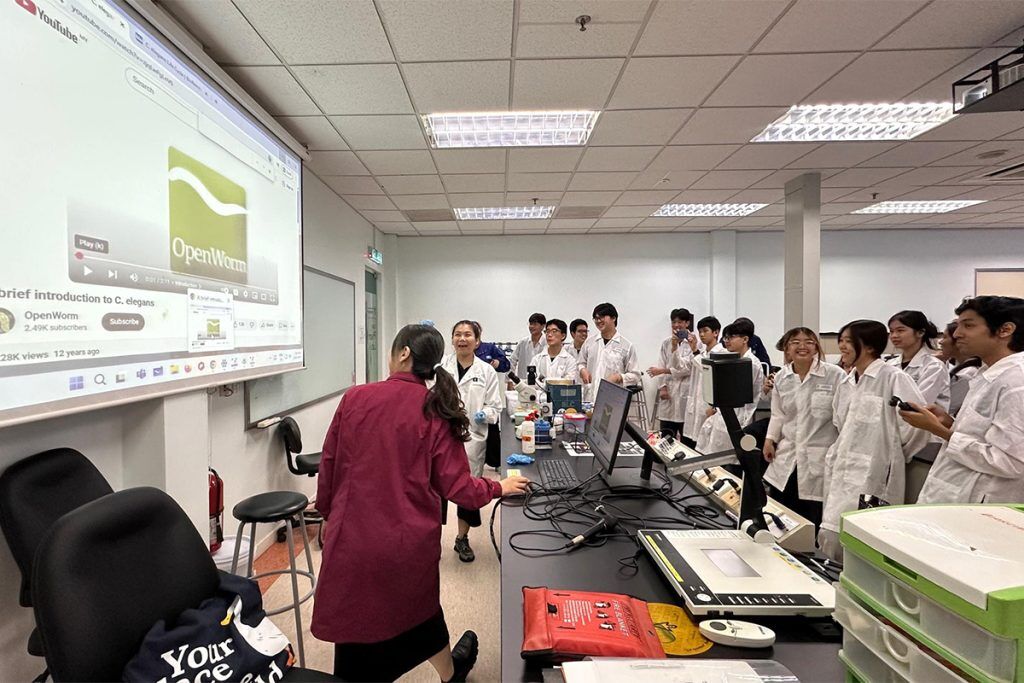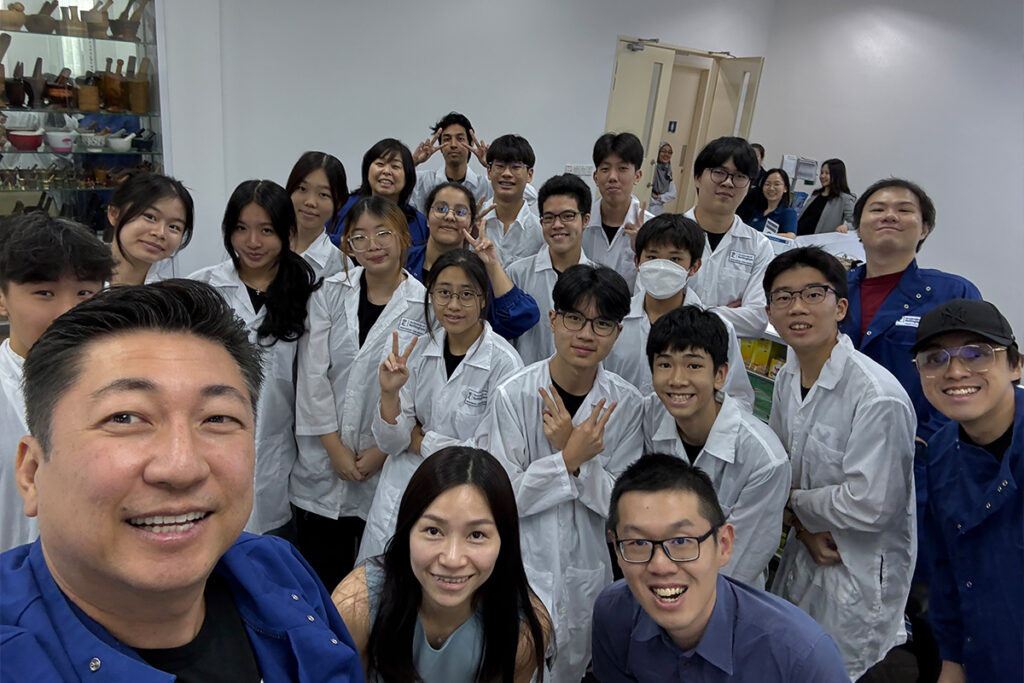BIOARMOR reaches XPRIZE Healthspan semifinals with an intervention rooted in Malaysian heritage and clinical ambition.
In partnership with our friends at TimePie, we continue our journey through the XPRIZE Healthspan Top 40, this heading to Malaysia and back to school to discover how a group of teenagers is applying classroom creativity to one of biology’s most complex problems.
When the XPRIZE Healthspan competition announced its semifinalists, one name stood out not for the scale of its biotech budget, but for the age of its participants. BIOARMOR, a team of Malaysian high school students, has joined the roster of research heavyweights in the global race to extend healthy lifespan. Their entry blends herbal compounds, traditional practices and dietary regimens – and, perhaps just as strikingly, the energy of a student cohort motivated by watching their grandparents age.
The BIOARMOR team is led and mentored by Danny Kim, a veteran of six successful XPRIZE teams, and TimePie sat down with him and the team to learn more about their intervention, their scientific rationale and the realities of competing on a global stage.
Longevity.Technology: It is easy to dismiss a team of teenagers as plucky outliers in a field dominated by professors and postdocs, but BIOARMOR’s XPRIZE progress highlights something important – longevity science does not have to be confined to ivory towers or venture-funded biotechs; innovation can emerge from unexpected quarters and, crucially, from perspectives that are less shackled by precedent. Their integration of Southeast Asian heritage remedies with structured fasting and exercise regimes is a reminder that the longevity toolkit need not be purely pharmacological – interventions that are culturally resonant and cost-effective may have far greater impact on global healthspan equity than another proprietary molecule with a price tag to match. The fact that this work is being driven by students motivated by the frailty of their grandparents is both poignant and instructive – longevity is not a niche interest of the wealthy old, but a universal issue that should engage all generations, particularly those who will inherit both the benefits and the burdens of an aging world.
Local roots and global ambitions
Team leader Danny Kim explains that BIOARMOR’s concept grew from the students’ lived experiences. “Many of the students mentioned that their inspiration came from watching their grandparents age and struggle with health, and wanted to contribute to helping solve this global problem of aging,” he says. The team name, BIOARMOR, stems from an early sponsor in the cybersecurity space, and the metaphor of defending against decline and disease was quickly adopted as a guiding philosophy.
The intervention combines three pillars: Tiger Milk Mushroom and cordyceps, both well-known in Southeast Asian traditional medicine; structured physical activity ranging from tai chi to local dance; and time-restricted eating. “We wanted to focus on a solution that has an Asian-Malaysian origin, and leverages the natural remedies found in SE Asia,” Kim says. “Based on initial clinical trial data, there are beneficial findings that show huge promise in the area of longevity.”
Clinical validation
BIOARMOR has secured approvals for an initial 90-day human clinical trial in Malaysia, with potential expansion to a year-long study if the team advances to the final round of the competition. Two established academics – Professor Kang-Nee Ting from the University of Nottingham Malaysia and Professor Shin-Yee Feng from the University of Malaya – will serve as principal investigators, supported by local clinical research organization NovaBiotech Asia.
Kim emphasizes that rigor is essential. “Through a partnership with local Malaysian clinical trial firms, we’ve secured the necessary approvals to do an initial 90-day clinical trial which will eventually expand to a one-year clinical trial if we make it to the final round of the competition,” he explains. For BIOARMOR, the move from idea to evidence is central to being taken seriously within a competitive field.
The education of innovation
Kim’s own background is in computer science and business, not biology, but he sees that as a strength rather than a weakness. “I believe that if you have the entrepreneurial, and reactive problem-solving mindset, you can tackle anything even if you’re not the expert in the field,” he notes. QuestX, the non-profit ecosystem behind the project, aims to inspire students to engage in high-stakes competitions, offering the scaffolding of mentorship and partnerships with universities and companies.

Student ownership is tangible, Kim says, citing the genesis of the intervention itself. “The idea of using a local, multi-modal Asian solution originated with the interviews of the students who were personally interested in longevity due to their desire to help older relatives and grandparents,” he explains. The team’s fresh lens – neither tied to convention nor to entrenched silos – has, he argues, enabled them to pursue approaches that might otherwise have been overlooked.
Financing the future
Kim is candid about the challenges of competing against well-funded institutions. The initial $250,000 XPRIZE prize money required them to incorporate as a non-profit to accept funds; further support is being sought from local businesses and philanthropic backers who value the potential of an Asian solution led by Asian students. “We are the underdog,” Kim acknowledges, but adds that interest and support have been extraordinary once their story is heard.

Beyond competition
While XPRIZE is the immediate focus, BIOARMOR is already building commercial pathways. Local distributors are in discussion, and a partnership with global nutraceutical distributor Prince of Peace is intended to bring the eventual solution to a wider market. There are also plans to replicate the educational model internationally, with schools in the United States and elsewhere expressing interest.
Seeds of tomorrow
That a team of Malaysian teenagers has taken its place alongside established research groups in a high-profile global competition is a reminder that the future of longevity science may be as much about who is asking the questions as about the answers they find. Ideas seeded in the classroom can grow into interventions with real-world impact – and, just as importantly, nurture a generation that sees aging not as a problem to endure, but as a challenge to be met with creativity, compassion and scientific rigor.

